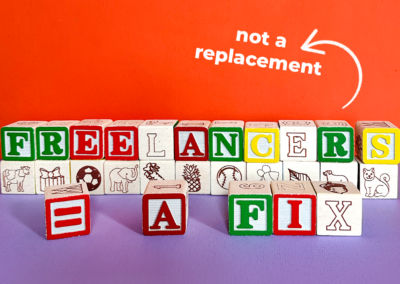By now we all know that after being forced to work from home for most of 2020 and 2021, many employees expect autonomy in their work going forward. After all, they’ve been keeping our organizations operational and doing it with less oversight than ever, during these exceptionally trying times.
It’s true, the future of work will be flexible, which is a good thing! It’s high time we reimagine workplace culture to be more real, more creative, and more flexible than ever before. This is the only way organizations and employees alike can thrive.
Conversations about the need for an autonomous workplace are causing great anxiety for many leaders, and you may be one of them. It’s easy to imagine complete pandemonium, particularly when many of us first experienced flexible and autonomous working conditions in the midst of the mayhem from the pandemic and civil unrest. Leaders may see their roles transitioning to just trying to keep track of everyone and what they are working on when their employees are no longer all under one roof; their every activity in clear view of leadership.
Take a breath. The good news is that with one key cultural shift, the more ownership you give your team, over how and when they complete their work and even over what type of work they are doing day to day, the lower everyone’s anxiety becomes.
The future of work must be psychologically safe. Staying competitive requires innovation. Innovation requires autonomy. Autonomy requires trust. And trust requires feeling psychologically safe. At work, this means that employees and contractors feel they can make mistakes, share ideas, and disagree with each other, and you, without fear of repercussions. It also means that employees can be themselves at work and know they will be afforded equal opportunities to thrive.
From a business perspective, environments that cultivate psychological safety see countless benefits, including increased productivity, more creativity, higher levels of innovation, and better employee retention rates. Not only is there a strong business case for prioritizing a safe, collaborative, and inclusive workspace, but it is also the right thing to do.
We are living and working through once-in-a-generation circumstances, and we have the chance to make a real impact. Every day, in each touchpoint, we have the chance to decide who we will be and how we will show up, as leaders. The days for managing on autopilot are over; our employees are looking to us to light the way for their success.
Our actions, our behaviors, and the culture we insist on are the foundation for a psychologically safe workplace. Here are three simple (if not easy) shifts we can make, starting with our next interaction, to begin fostering an environment that builds trust, supports workers, and lives and breathes innovation.
Reimagine the open-door policy. Lowering the barriers your team has to come to you with questions, concerns, and ideas, while increasing transparency across your organization will show your team that you value their contributions. Make sharing information the default and err on the side of giving too much information. When people have more information, they feel like they are a part of what’s happening, instead of a victim to the whims of decision-makers. In turn, this will give them the safety they need to make better decisions for their own work – and life.
Encourage participation and openness. And when people take you up on it, be present and express gratitude, for both feedback and insights shared. Remind your team that you don’t have all the answers. They know this, and you telling them you know it too can build security and trust. When someone does give you critical feedback, receive it with curiosity, as getting defensive will almost always break trust and become a major setback.
Say yes to experiments and collaboration. Great leaders support their team members when they offer experimental ideas and solutions, while also putting guardrails in place to ensure that even a failed idea leads to learning, which is always a positive outcome. When your team knows they have the space to innovate and iterate, they will feel safe to push their own creativity, and their confidence will grow.
Bonus tip! The way we, as leaders, react to mistakes and missteps matters! In a culture where innovation and experimentation are encouraged, things are not always going to go the way we hope. These moments give us an opportunity to double down on showing our employees they are psychologically safe. Discuss what went wrong in positive and productive ways, to gain insights, not place blame. Internally, you can shift your own thinking to reframe unsuccessful experiments as a sort of paid training that will help you and your team members level up
Natalie’s Socials: Instagram, LinkedIn
Editor’s Socials & Website – LaKay Cornell: Instagram, Twitter, LinkedIn, Website



